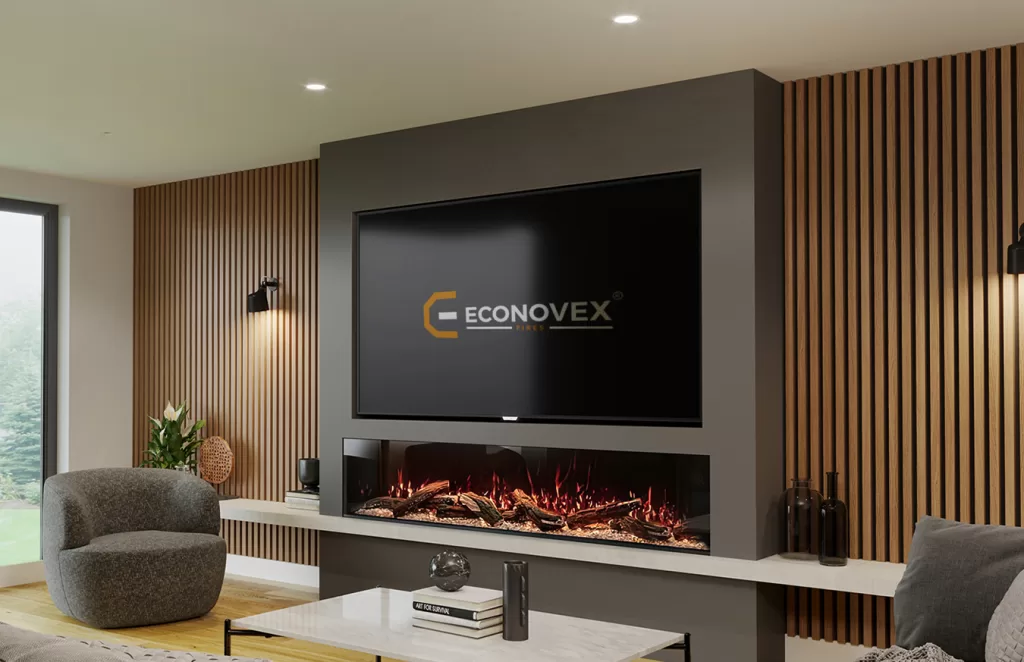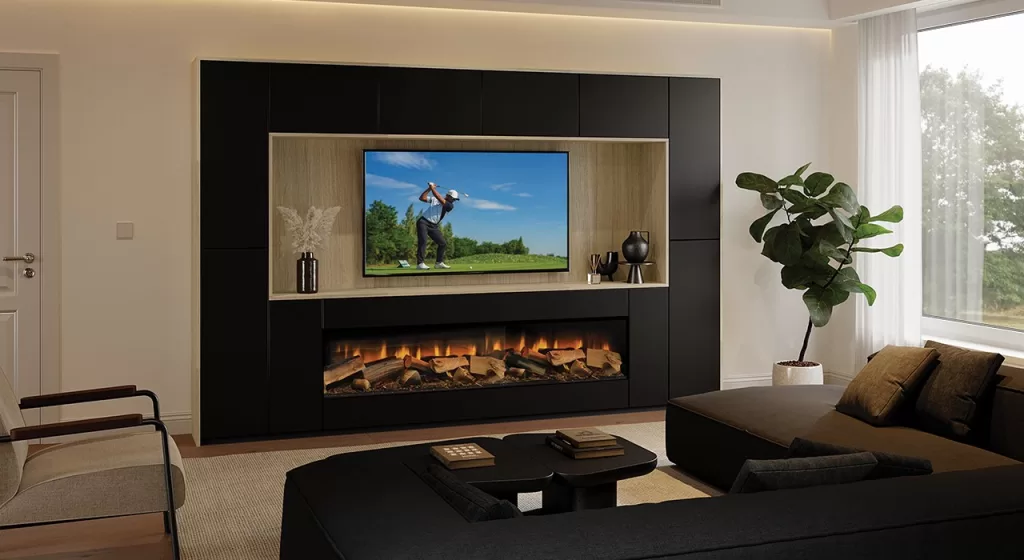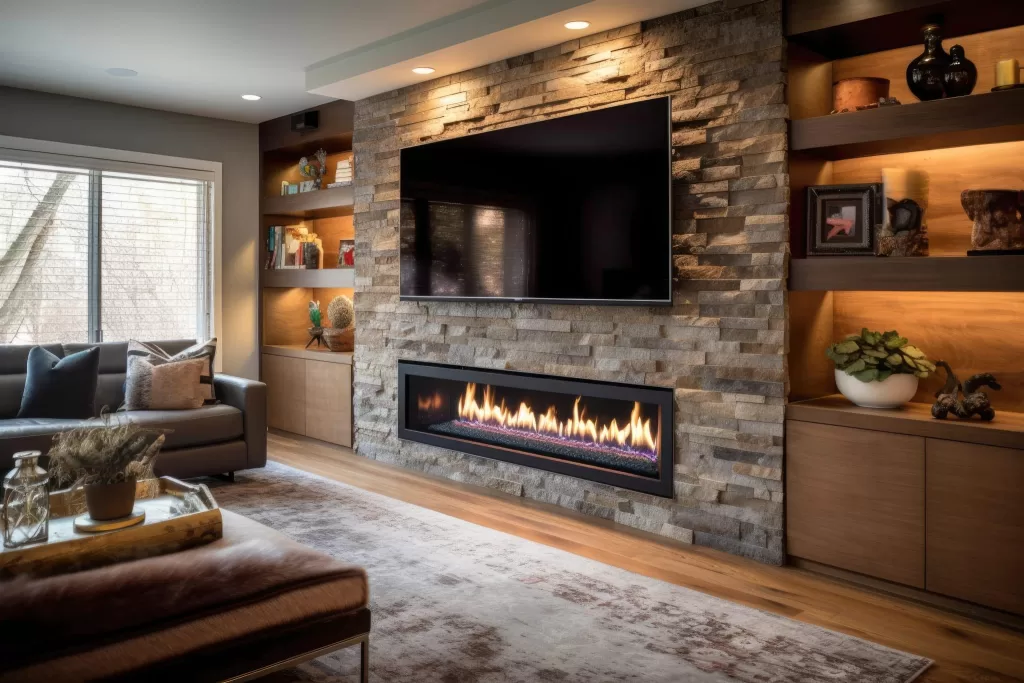Designing a media wall is a fantastic way to bring functionality and style into your living space, creating a central focus for entertainment, storage, and visual appeal. Whether you’re looking to install a wall mounted TV, a modern fireplace, or open shelves, the right media wall can become the centerpiece of your home. Here’s a comprehensive guide to designing the best media wall, from layout and functionality to aesthetics and tech considerations.

10 Easy Tips How To Design The Best Media Wall
1. Consider Your Wall Space and Layout
The first step in designing a media wall is selecting the right space and determining the layout. Media walls can suit living rooms, bedrooms, or even larger open plan spaces, depending on where you most enjoy your media setup. Measure the space available on the wall, considering both height and width, to ensure it’s suitable for the elements you wish to include, such as a TV, speakers, and shelving.
Take into account where the seating will be, and make sure that the TV or display screen is at a comfortable viewing height. Consider the layout around the media wall, as well; you may want extra seating, a place for side tables, or simply a clear, unobstructed view.
2. Choose the Right Media Components
Determine what components you want to incorporate into your media wall. Common elements include:
- Television – The size and position of the TV should be a top priority. Ensure it’s mounted at eye level for comfortable viewing and choose a size that complements the room’s dimensions.
- Sound System – A great media wall often includes high-quality sound equipment. Whether it’s a soundbar, surround sound speakers, or a complete hi-fi system, plan for wiring and speaker placement for the best audio experience.
- Fireplace – Many modern media walls integrate a fireplace for both aesthetics and warmth. Choose an electric or gas fireplace, which is easier to incorporate than a traditional fireplace. Place it beneath the TV for a cosy, cohesive look.
- Storage Solutions – Custom cabinets, shelving, or cubbies can add storage space for DVDs, books, or gaming consoles, helping to keep the room tidy and organised.

3. Think About Functionality
A media wall needs to be both stylish and functional. Consider the practical needs, such as easy access to storage or the ability to hide unsightly cables. For larger systems with multiple devices, including a media console or cabinet with built-in cable management solutions can help create a clutter-free look.
If you plan to house multiple media devices, like gaming consoles, set top boxes, or streaming devices, think about ventilation. Devices can overheat if not properly ventilated, so ensure the media wall design allows for airflow around each piece of equipment.
4. Plan for Optimal Lighting
Lighting is essential in setting the mood and enhancing the visual appeal of your media wall. Consider incorporating:
- Accent Lighting – LED strip lights behind the TV or shelves can add a modern look, creating an ambient glow that reduces eye strain when watching TV in the dark.
- Spotlights – Recessed spotlights or track lighting can highlight specific areas of the media wall, such as shelves or artwork, to enhance the design.
- Dimmable Lights – Install dimmable lighting options to give you greater control over the ambiance, allowing you to adjust the light levels based on what’s on screen.
Smart lighting solutions that can sync with your TV or home theatre system can also be an excellent addition for a cinematic experience.
5. Select Finishes and Materials
The finishes and materials you choose will play a big role in the look of your media wall. Some popular options include:
- Wood Paneling – Wooden panels add warmth and can make the media wall look luxurious. Consider natural tones for a traditional style or darker, rich woods for a more dramatic, modern look.
- Stone or Tile – Stone and tile offer texture and a timeless feel, especially when used around a fireplace. These materials are also durable and relatively low-maintenance.
- Painted Plaster or Drywall – A simple, painted media wall can look clean and modern. Use colours that complement the room’s decor and consider using contrasting shades to highlight specific sections.
- Metal Accents – Metal, whether in the form of shelving brackets, frames, or accent pieces, can give the media wall an industrial touch.
Blending different materials, such as a wood and stone combination, can add depth and make your media wall visually engaging.

6. Incorporate Smart Storage Solutions
One of the benefits of a media wall is the ability to include built in storage. Consider custom shelving, closed cabinets, and pull out drawers for a seamless, clutter-free look. Use closed storage for unsightly items or things you don’t want on display, such as remotes, DVDs, or game controllers. Open shelves can be used for books, decorative pieces, or even small plants to add a touch of personality.
7. Embrace Technology
Media walls often integrate cutting edge technology, creating an interactive and immersive entertainment experience. Some modern options include:
- Hidden TV – If you want a minimalist look, consider hiding the TV behind sliding panels or even a mirror that transforms into a screen when turned on.
- Voice Controlled Systems – Integrate voice activated controls for hands-free use of your media system.
- Smart Home Integration – Connect your media wall to your smart home system to control lighting, sound, and temperature from your phone or voice assistant.
8. Add Decorative Touches
Decorate the media wall to make it a true focal point. Add personal touches like artwork, family photos, or decorative objects that reflect your style. You can also incorporate elements like plants for a touch of greenery, or display collectibles to showcase your personality.
A few decorative ideas include:
- Framed Artwork – Place art pieces on shelves or hang them next to the TV for visual interest.
- Picture Ledge – A picture ledge allows for interchangeable decor without committing to wall mounting.
- Plants – Low maintenance plants, like succulents or pothos, can bring life to the space and add color.
9. Focus on Cable Management
Effective cable management is crucial for a polished, clutter free look. Most media walls come with built in solutions for hiding cables and power outlets, which not only improves aesthetics but also enhances safety. Use wall conduits, cord covers, or cable ties to ensure everything remains tidy and out of sight.
If you’re designing a media wall yourself, invest in cable management products to keep everything organized and avoid unsightly tangles behind your devices.
10. Work with a Professional
While DIY projects are rewarding, a media wall is often complex and may require professional expertise. Designers and installers can help you create a functional, beautiful media wall that maximises your space while meeting your design goals. They’ll ensure proper installation, which is especially important for heavier items like wall mounted TVs or fireplaces.
Hiring a professional can also be beneficial for integrating tech solutions, as they can safely and seamlessly install wiring, speakers, and other electrical components.
Designing the perfect media wall involves a careful balance of style, functionality, and technology. By considering layout, lighting, materials, and storage, you can create a media wall that enhances both your entertainment experience and the aesthetics of your room.
Whether you’re aiming for a minimalist look or a feature rich setup, your media wall can transform your space into a welcoming, stylish, and multi functional hub. With thoughtful planning and attention to detail, the right media wall will become a show stopping feature in your home for years to come.
